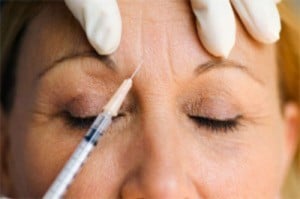Seek treatment for hair loss by visiting a professional hair care expert.
Seek treatment for hair loss by visiting a professional hair care expert.
Blog Article
Browsing Skin Cancer Cells Treatment: The Important Duty of Mohs in Modern Dermatology Practices
Skin cancer cells, a complicated medical diagnosis, typically leaves people grappling with countless therapy options. As we explore the ins and outs of this procedure, one will certainly value its critical duty in skin cancer therapy.
Comprehending Skin Cancer: Kinds and Threats
Skin cancer, a possibly lethal malady, is much more widespread than lots of people understand. This illness, created by the unrestrained development of irregular skin cells, primarily results from DNA damages due to exposure to the sun and ultraviolet (UV) light. There are three main kinds of skin cancer: Basal cell carcinoma, Squamous cell carcinoma, and Melanoma. While the former two are much less dangerous and compose the majority of identified instances, cancer malignancy is one of the most unsafe. It represents just concerning 1% of skin cancer cells cases but causes the large bulk of skin cancer cells fatalities - mohs surgery. Risk elements consist of reasonable skin, background of sunburn, too much sun exposure, living at high altitudes or near the equator, having several moles, a household history of skin cancer, and damaged immune system.
What Is Mohs Surgical treatment and How It's Changing Skin Cancer Cells Therapy
Regardless of the countless therapies currently offered for skin cancer cells, Mohs surgery stands out as a groundbreaking and extremely efficient remedy. Called after Frederic E. Mohs, the medical professional who established the procedure, Mohs surgery is a specific medical technique utilized to treat skin cancer. This degree of precision, combined with the capability to spare as much healthy and balanced tissue as possible, is transforming skin cancer treatment.
The Advantages of Mohs Surgical Procedure Over Conventional Skin Cancer Therapies
Building on the cutting-edge nature of Mohs surgical treatment, it's crucial to consider its countless advantages over conventional skin cancer therapies. Unlike common treatments, Mohs supplies a greater cure price, usually getting to 99% for newbie treatments and 94% for reoccurring you could check here cancers cells. This skin cancer precision is due to its one-of-a-kind method of gradually removing and taking a look at tissue layers till only cancer-free cells remain (chemical peel). Furthermore, it minimizes damages to healthy skin, bring about less scarring and boosted cosmetic results. Mohs additionally offers instant outcomes, eliminating the anxiety-ridden delay usual with other techniques. It's cost-efficient, as the surgery and tiny examination occur concurrently, getting rid of the requirement for extra research laboratory solutions. Hence, Mohs stands for a substantial innovation in skin-related techniques.
The Procedure of Mohs Surgical Procedure: What to Anticipate During the Process

Possible Adverse Effects and Post-Operative Care of Mohs Surgical Treatment
Undertaking Mohs surgical procedure, like any kind of other procedure, involves possible side effects that patients need to know. Usual negative effects consist of pain, wounding, and swelling at the surgery website. However, these are typically momentary and workable with non-prescription discomfort medication and ice packs. In uncommon cases, clients may experience infection, bleeding, or a sensitive response to the anesthetic. Post-operative care is essential to recovery and decreasing negative effects. This commonly includes maintaining the injury tidy and dry, taking recommended medicines, and avoiding strenuous tasks. Clients need to likewise participate in all follow-up visits for injury care and tracking. In some situations, added treatments might be necessary to make sure complete removal of the malignant cells. Sticking to these post-operative care guidelines can considerably enhance recuperation and end results.
Verdict

Report this page